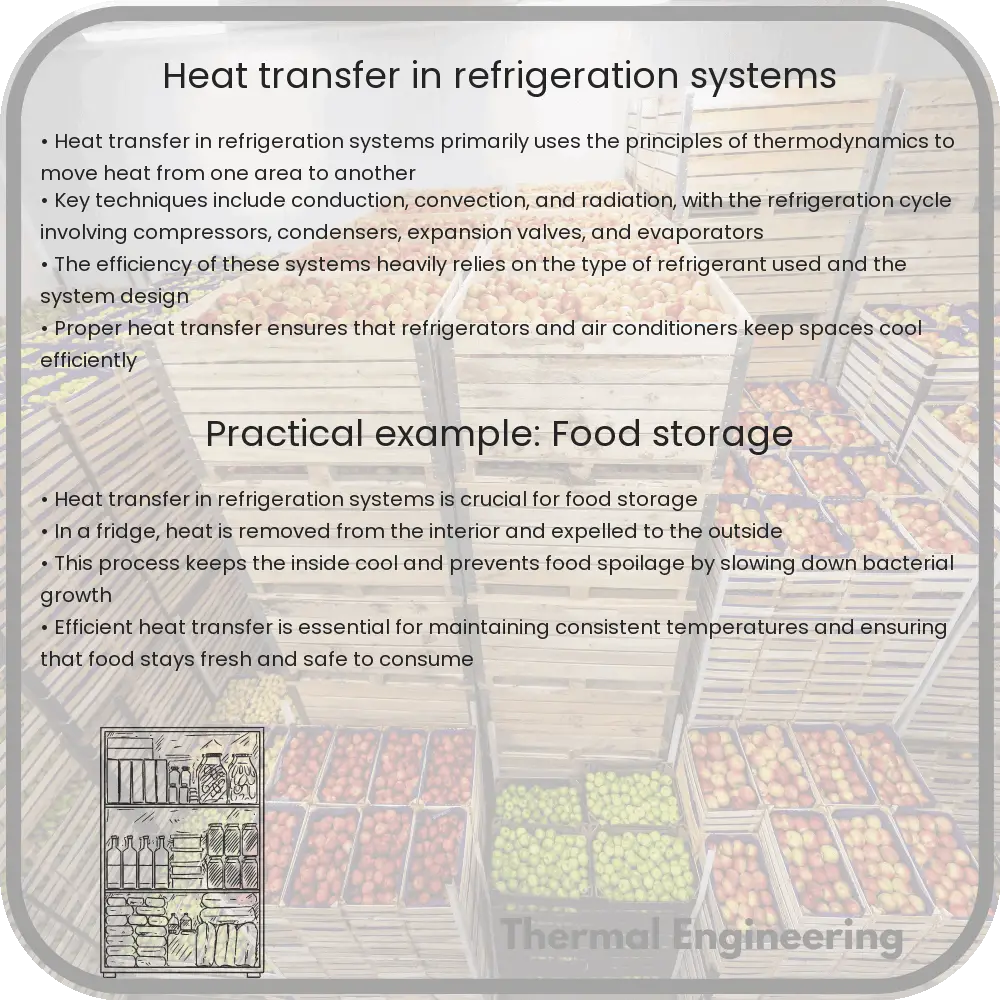Learn about the role of heat transfer in refrigeration systems, focusing on its mechanisms and impact on efficiency.

Understanding Heat Transfer in Refrigeration Systems
Heat transfer is a fundamental concept in refrigeration systems, which are used to cool and preserve food, medicine, and other perishable items by removing heat from one area and disposing of it in another. This article explores how heat transfer processes are integral to the operation of refrigeration systems.
Basics of Heat Transfer
Heat transfer in refrigeration involves three primary mechanisms: conduction, convection, and radiation. However, in most refrigeration systems, conduction and convection are the most relevant:
- Conduction is the transfer of heat through a solid material. In refrigerators, this occurs when heat travels through the walls of the refrigeration chamber.
- Convection is the transfer of heat by the movement of fluids (liquids or gases). In refrigeration systems, convection is used to circulate refrigerant, which absorbs and carries heat away.
- Radiation involves heat transfer in the form of electromagnetic waves and is generally less significant in the context of conventional refrigeration.
The Refrigeration Cycle
The refrigeration cycle is a technical process where refrigerant absorbs and removes heat from the space to be cooled. Here’s a basic outline of this cycle:
- Evaporation: The refrigerant absorbs heat as it converts from a low-pressure liquid into a vapor, effectively removing heat from the refrigerator’s interior.
- Compression: The vaporized refrigerant is compressed by a compressor, which increases its pressure and temperature, making it a high-temperature vapor.
- Condensation: The high-pressure, high-temperature vapor travels through condenser coils where it releases the absorbed heat to the outside environment and condenses into a high-pressure liquid.
- Expansion: The high-pressure liquid passes through an expansion valve, reducing its pressure and temperature before it re-enters the evaporator to repeat the cycle.
This cycle is crucial because each phase in the process focuses on optimizing the transfer of heat, using the properties of the refrigerant effectively.
Importance of Heat Transfer Coefficients
The efficiency of heat transfer in refrigeration systems heavily relies on heat transfer coefficients, which measure how well heat is transferred through materials. Different parts of the refrigerator have different coefficients impacting the system’s overall performance:
- In the evaporator, a higher heat transfer coefficient means that the refrigerant can absorb more heat from the interior, enhancing cooling efficiency.
- In the condenser, a higher coefficient facilitates the release of heat into the environment, crucial for maintaining the efficiency of the cycle.
Technological Advances
Recent advancements in refrigeration technology focus on improving the materials used in heat exchangers and developing more effective and environmentally friendly refrigerants. These changes aim to increase the heat transfer coefficients and reduce the overall energy consumption and environmental impact of refrigeration systems.
Conclusion
Understanding the basics of heat transfer within refrigeration systems illuminates how these appliances maintain their cool environments. By improving components and optimizing the refrigeration cycle, engineers can enhance efficiency and sustainability, making these systems integral to modern life.
This overview of heat transfer in refrigeration systems underscores the critical role of physics and engineering in developing practical, efficient technologies that meet everyday needs and contribute to global sustainability efforts. Whether for industrial or domestic purposes, the principles of heat transfer serve as the backbone for refrigeration technology.